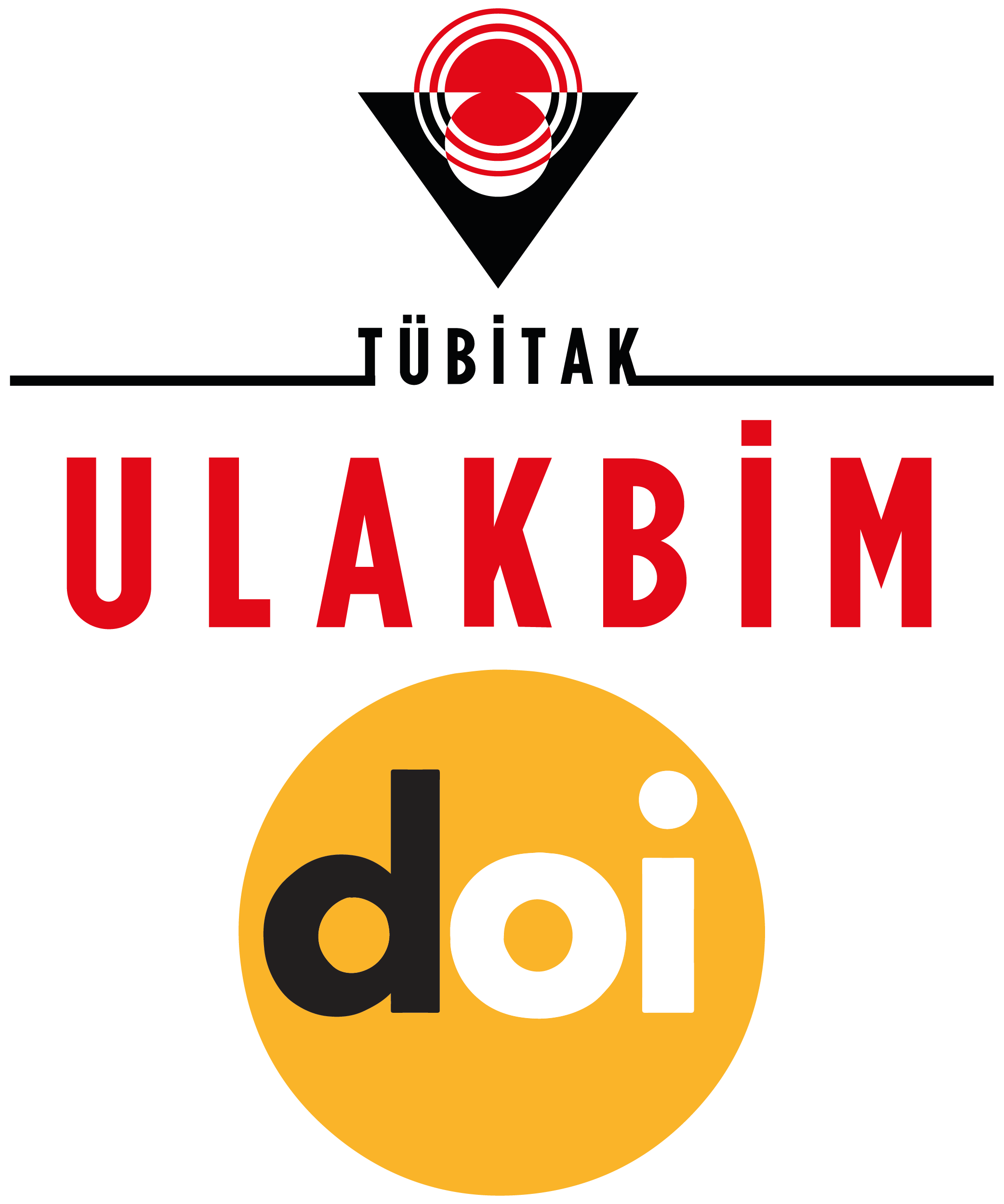Resort Otel Deneyiminin Turist Memnuniyeti ve Sadakati Üzerindeki Etkileri (The Effects of Resort Hotel Experience on Tourist Satisfaction and Loyalty)
DOI:
https://doi.org/10.21325/jotags.2021.923Keywords:
Tourist experience, Satisfaction, Loyalty, Resort hotelsAbstract
The purpose of this study is to examine the effects of resort hotel experience on tourist satisfaction and loyalty. Using both convenience and quota sampling methods, a total of 1070 useable questionnaires were collected from domestic and foreign tourists staying at five-star resort hotels in top resort destinations of Turkey (i.e., Antalya, Muğla, Aydın, and İzmir). To analyze the data, covariance-based structural equation modeling was performed. The study revealed that resort hotel experiences are six-dimensional: 1) physical facilities, 2) comfort, 3) design and environment,4) professionalism, 5) attentiveness and 6) guest interaction. The results indicate that all six dimensions of resort hotel experience positively influence tourist satisfaction. Nevertheless, only the latter three dimensions (i.e., professionalism, attentiveness, and guest interaction) were found to have statistically significant effects on tourist loyalty. The study also supports the mediating role of tourist satisfaction on the relationship between resort hotel experience and tourist loyalty.
References
Adhikari, A., & Bhattacharya, S. (2016). Appraisal of literature on customer experience in tourism sector: Review and framework. Current Issues in Tourism, 19(4), 296-321.
Alegre, J., & Cladera, M. (2009). Analysing the effect of satisfaction and previous visits on tourist intentions to return. European Journal of Marketing, 43(5/6), 670-685.
Ali, F. (2015). Heritage tourist experience, nostalgia, and behavioural intentions. Anatolia: An International Journal of Tourism and Hospitality Research, 26(3), 472-475.
Ali, F., Amin, M., & Cobanoglu, C. (2016). An integrated model of service experience, emotions, satisfaction, and price acceptance: An empirical analysis in the Chinese hospitality industry. Journal of Hospitality Marketing & Management, 25(4), 449-475.
Altunel, M. C., & Erkut, B. (2015). Cultural tourism in Istanbul: The mediation effect of tourist experience and satisfaction on the relationship between involvement and recommendation intention. Journal of Destination Marketing & Management, 4, 213-221.
Anderson, J. C., & Gerbing, D. W. (1988). Structural equation modeling in practice: A review and recommended two-step approach. Psychological Bulletin, 103(3), 411–423.
Arıkan Saltık, I. (2011). Turizm sektöründe deneyimsel pazarlama ve tüketici davranışları üzerine etkisi. (Yüksek Lisans Tezi). Muğla Üniversitesi, Sosyal Bilimler Enstitüsü, Muğla.
Arnould, E. J., & Price, L. L. (1993). River magic: Extraordinary experience and the extended service encounter. Journal of Consumer Research, 20(1), 24-45.
Back, K. J. (2005). The effects of image congruence on customers’ brand loyalty in upper middle-class hotel industry. Journal of Hospitality and Tourism Research, 29(4), 448–467.
Back, K. J., & Parks, S. C. (2003). A brand loyalty model involving cognitive, affective and conative brand loyalty and customer satisfaction. Journal of Hospitality and Tourism Research, 27(4), 419–435.
Baloglu, S. (2002). Dimensions of customer loyalty: Separating friends from well wishers. Cornell Hotel and Restaurant Administration Quarterly, 43(1), 47-59.
Barnes, S. J., Mattsson, J., & Sørensen, F. (2014). Destination brand experience and visitor behavior: Testing a scale in the tourism context. Annals of Tourism Research, 48, 121-139.
Bigné, J. E., Andreu, L., & Gnoth, J. (2005). The theme park experience: An analysis of pleasure, arousal and satisfaction. Tourism Management, 26(6), 833-844.
Bowen, J., & Chen, S. (2001). The relationship between customer loyalty and customer satisfaction. International Journal of Contemporary Hospitality Management, 13(4/5), 213-217.
Cetin, G., & Istanbullu Dincer, F. (2014). Influence of customer experience on loyalty and word-of-mouth in hospitality operations. Anatolia: An International Journal of Tourism and Hospitality Research, 25(2), 181-194.
Cetin, G., & Walls, A. (2016). Understanding the customer experiences from the perspective of guests and hotel managers: Empirical findings from luxury hotels in Istanbul, Turkey. Journal of Hospitality Marketing & Management, 25(4), 395-424.
Cronin, J. J., Brady, K., & Hult, G. T. M. (2000). Assessing the effects of quality, value and consumer satisfaction on consumer behavioral intentions in service environments. Journal of Retailing, 76(2), 193-218.
del Bosque, I. R., & San Martín, H. (2008). Tourist satisfaction a cognitive-affective model. Annals of Tourism Research, 35(2), 551-573.
Ding, C. G., & Tseng, T. H. (2015). On the relationships among brand experience, hedonic emotions, and brand equity. European Journal of Marketing, 49(7/8), 994-1015.
Dong, P., & Siu, N. Y. M. (2013). Servicescape elements, customer predispositions and service experience: The case of theme park visitors. Tourism Management, 36, 541-551.
Efron, B. (1987). Better bootstrap confidence intervals. Journal of the American Statistical Association, 82(397), 171-185.
Efron, B., & Tibshirani, R. (1986). Bootstrap methods for standard errors, confidence intervals, and other measures of statistical accuracy. Statistical Science, 1(1), 54-75.
Ekinci, Y., Dawes, P. L., & Massey, G. R. (2008). An extended model of the antecedents and consequences of consumer satisfaction for hospitality services. European Journal of Marketing, 42(1/2), 35-68.
Fornell, C. (1982). A second generation of multivariate analysis. Methods,1, New York: Praeger.
Fornell, C., & Larcker, D. F. (1981). Evaluating structural equation models with unobservable variables and measurement error. Journal of Marketing Research, 18(1), 39-50.
Gentile, C., Spiller, N., & Noci, G. (2007). How to sustain the customer experience: An overview of experience components that co-create value with the consumer. European Management Journal, 25(5), 395-410.
Gonçalves, H. M., & Sampaio, P. (2012). The customer satisfaction-customer loyalty relationship: Reassessing customer and relational characteristics moderating effects. Management Decision, 50(9), 1509-1526.
Hair, J. F., Black,W. C., Babin, B. J., Anderson, R. E., & Tatham, R. L. (2005). Multivariate data analysis (6th ed.). New Jersey: Prentice Hall.
Han, D., Duhachek, A., & Agrawal, N. (2014). Emotions shape decisions through construal level: The case of guilt and shame. Journal of Consumer Research, 41(4), 1047-1064.
Hosany, S., & Gilbert, D. (2010). Measuring tourists’ emotional experiences toward hedonic holiday destinations. Journal of Travel Research, 49(4), 513-526.
Hosany, S., & Witham, M. (2010). Dimensions of cruisers’ experiences, satisfaction, and intention to recommend. Journal of Travel Research, 49(3), 351-364.
Huang, J., & Hsu, C. H. C. (2010). The impact of customer-to-customer interaction on cruise experience and vacation satisfaction. Journal of Travel Research, 49(1), 79-92.
Hung, I. W., & Mukhopadhyay, A. (2014). Lenses of the heart: How actors' and observers' perspectives influence emotional experiences. Journal of Consumer Research, June(Supplement), S270-S282.
Jin, N., Lee, S., & Huffman, L. (2012). Impact of restaurant experience on brand image and customer loyalty: Moderating role of dining motivation. Journal of Travel & Tourism Marketing, 29(6), 532-551.
Jin, N., Lee, S., & Lee, H. (2015). The effect of experience quality on perceived value, satisfaction, image and behavioral intention of water park patrons: new versus repeat visitors. International Journal of Tourism Research, 17, 82-95.
Kao, Y-F., Huang, L-S., & Wu, C-H. (2008). Effects of theatrical elements on experiential quality and loyalty intentions for theme parks. Asia Pacific Journal of Tourism Research, 13(2), 163-174.
Kim, S. (2012). The relationships of on-site film-tourism experiences, satisfaction, and behavioral intentions: The case of Asian audience's responses to a Korean Historical TV Drama. Journal of Travel & Tourism Marketing, 29(5), 472-484.
Kim, J-H., & Ritchie, J. R. B. (2014). Cross-cultural validation of a memorable tourism experience scale (MTES). Journal of Travel Research, 53(3) 323-335.
Kim, J-H., Ritchie, J. R. B., & McCormick, B. (2012). Development of a scale to measure memorable tourism experiences. Journal of Travel Research, 51(1), 12-25. Tourism Analysis, 15, 637-648.
Kim, J-H., & Ritchie, J. R. B., & Tung, V. W. S. (2010). The effect of memorable experience on behavioral intentions in tourism: A structural equation modeling approach.
Lin, K-M. (2006). An examination of the relationship between experiential marketing strategy and guests’ leisure behaviour in Taiwan hot-spring hotels (Doctoral Dissertation). United States Sports Academy, Alabama, USA. Available from ProQuest Dissertations and Theses database. (UMI No. 3228653).
Mantihou, A., Kang, J., Sumarjan, N., & Tang, L. (2016). The incorporation of consumer experience into the branding process: An investigation of name-brand hotels. International Journal of Tourism Research, 18(2), 105-115.
Matzler, K., Strobl, A., Stokburger-Sauer, N., Bobovnicky, A., & Bauer, F. (2016). Brand personality and culture: The role of cultural differences on the impact of brand personality perceptions on tourists' visit intentions. Tourism Management, 52, 507-520.
Mehmetoglu, M., & Engen, M. (2011). Pine and Gilmore's concept of experience economy and its dimensions: An empirical examination in tourism. Journal of Quality Assurance in Hospitality & Tourism, 12(4), 237-255
Mehrabian, A., & Russell, J. A. (1974). An approach to environmental psychology. Cambridge, MA: MIT.
Oh, H., Fiore, A., & Jeoung, M. (2007). Measuring experience economy concepts: Tourism applications. Journal of Travel Research, 46(2), 119-132.
Oliver, R. L. (1980). A cognitive model of the antecedents and consequences of satisfaction decisions, Journal of Marketing Research, 17, 460-469.
Oliver, R. L. (1997). Satisfaction: A behavioral perspective on the consumer. New York: Irwin/McGraw-Hill.
Oliver, R. L. (1999). Whence consumer loyalty? Journal of Marketing, 63(4), 33–44.
Öztürk, Y. (2013). Destinasyon tanımı ve özellikleri. M. Yeşiltaş (Der.), Destinasyon Yönetimi, (ss. 2-17). Eskişehir: Anadolu Üniversitesi.
Pettersson, R., & Getz, D. (2009). Event Experiences in Time and Space: A Study of Visitors to the 2007 World Alpine Ski Championships in Åre, Sweden. Scandinavian Journal of Hospitality and Tourism, 9(2-3), 308-326.
Pine, B. J., & Gilmore, J. H. (1998). Welcome to the experience economy. Harvard Business Review, 76(4), 97-105.
Prayag, G., Hosany, S., Muskat, B., & Del Chiappa, G. (2017). Understanding the relationships between tourists’ emotional experiences, perceived overall image, satisfaction, and intention to recommend. Journal of Travel Research, 56(1), 41-54.
Prayag, G., Hosany, S., & Odeh, K. (2013). The role of tourists' emotional experiences and satisfaction in understanding behavioral intentions. Journal of Destination Marketing & Management, 2(2), 118-127.
Robinson, R. N. S., & Clifford, C. (2012). Authenticity and festival foodservice experiences. Annals of Tourism Research, 39(2), 571-600.
Salerno, A., Laran, J., & Janiszewski, C. (2014). Hedonic eating goals and emotion: When sadness decreases the desire to ındulge. Journal of Consumer Research, 41(1), 135-151.
Schmitt, B. H. (1999). Experiential marketing. Journal of Marketing Management, 15, 53-67.
Schmitt, B. H. (2009). The concept of brand experience. Journal of Brand Management, 16(7), 417-419.
Tosun, C., Dedeoğlu, B. B., & Fyall, A. (2015). Destination service quality, affective image and revisit intention: The moderating role of past experience. Journal of Destination Marketing & Management, 4, 222–234.
Tosun, C., Temizkan, P. S., Timothy, D. J., & Fyall, A. (2007). Tourist shopping experiences and satisfaction. International Journal of Tourism Research, 9(2), 87-102.
Tsai, C-T. (2016). Memorable tourist experiences and place attachment when consuming local food. International Journal of Tourism Research, 18, 536-548.
Tussyadiah, I. P. (2014). Toward a theoretical foundation for experience design in tourism. Journal of Travel Research, 53(5), 543-564.
Tung, V., & Ritchie, B. (2011). Exploring the essence of memorable tourism experiences. Annals of Tourism Research, 38(4), 1367-1386.
Usakli, A., & Baloglu, S. (2011). Brand personality of tourist destinations: An application of self-congruity theory. Tourism Management, 32(1), 114-127.
Volo, S. (2009). Conceptualizing experience: A tourist based approach. Journal of Hospitality Marketing & Management, 18(2-3), 111-126.
Walls, A. R., Okumus, F., Wang, Y., & Kwun, D. J-W. (2011). Understanding the consumer experience: An exploratory study of luxury hotels. Journal of Hospitality Marketing & Management, 20(2), 166-197.
Wan, L. C. (2013). Culture's impact on consumer complaining responses to embarrassing service failure. Journal of Business Research, 66(3), 298-305.
Wang, W., Chen, J. S., Fan, L., & Lu, J. (2012). Tourist experience and wetland parks: A case of Zhejiang, China. Annals of Tourism Research, 39(4), 1763-1778.
Wu, H. C., Li, M. Y., & Li, T. (2018). A study of experiential quality, experiential value, experiential satisfaction, theme park image, and revisit intention. Journal of Hospitality & Tourism Research, 42(1), 26-73.
Xiang, Z., Schwartz, Z., Gerdes, J. H., & Uysal, M. (2015). What can big data and text analytics tell us about hotel guestexperience and satisfaction? International Journal of Hospitality Management, 44, 120-130.
Xu, J. B., & Chan, A. (2010). Service experience and package tours. Asia Pacific Journal of Tourism Research, 15(2), 177-194.
Yoon, Y., & Uysal, M. (2005). An examination of the effects of motivation and satisfaction on destination loyalty: A structural model. Tourism Management, 26(1), 45-56.
Zeithaml, V. A., Berry, L. L., & Parasuraman, A. (1996). The behavioral consequences of service quality. Journal of Marketing, 60(2), 31-46.
Zhao, X., Lynch, J. G., & Chen, Q. (2010). Reconsidering Baron and Kenny: Myths and truths about mediation analysis. Journal of Consumer Research, 37(2), 197-206.
Zhong, Y. Y., Busser, J. A., & Baloglu, S. (2013). The impact of memorable destination experiences: A conceptual model and preliminary analysis. 31th EuroCHRIE Conference, Freiburg, Germany.
Downloads
Published
How to Cite
Issue
Section
License
Copyright (c) 2023 Journal of Tourism & Gastronomy Studies

This work is licensed under a Creative Commons Attribution-NonCommercial 4.0 International License.








